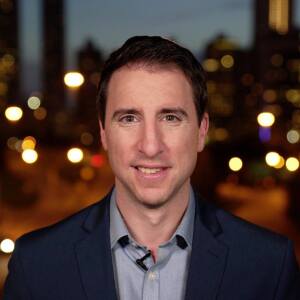ATLANTA — It’s an enormous fear for so many: that you’ll go to the hospital for an emergency, be unable to pay the bill, and be saddled with debt.
We often don’t discuss matters of money, but because of that, we don’t often hear about a problem that affects more people that you might think.
This past September, during the Jewish holiday of Rosh Hashanah, a rabbi in Atlanta shared his own story with his congregation.
“A rabbinical student woke up in the middle of the night and rushed to the ER with the worst pain he’d ever felt in his life,” Rabbi Sam Kaye recalled. “Even with insurance, he couldn’t afford the bill. Do I have to tell you that this example was my own?”
Rabbi Kaye had barely heard of medical debt before he lived it. Months of biopsies and tests left him with $20,000 in medical bills he couldn’t pay.
“I was absolutely terrified to even check my bank web site," Kaye said. "I didn’t want to see the number. I didn’t want to see how far I was away from zero. Even now, I get a letter from the doctor, I get a letter from the hospital, and I do not want to open it.”
This summer the Journal of the American Medical Association released a stunning report. It found the total medical debt in America is roughly $140 billion. That’s more than all other debt combined, and has been for five years. It found 1 in 6 Americans has some amount of medical debt in collections.
“The numbers are sort of mind-boggling," said Ruth Lande, who oversees debt operations at R.I.P. Medical Debt, a nonprofit whose very existence shows how broken the system has become.
“It’s hard to collect on debt from patients because often people can’t afford it," she explained. "And so, sometimes the hospitals sell it off to secondary debt collectors.”
When they do, the debt loses value. It loses more as it continues to go unpaid. R.I.P. Medical Debt purchases and pays off people’s debts for pennies on the dollar.
“For that person," Lande said, "you're being billed for $1,000, and this is, you know, an incredible burden to you. But on the market, that $1,000 is probably only worth $10 or $5 because the market knows that it's probably not going to be collected. That's why we can buy it for cheap. If you say, ‘That’s crazy,’ you have understood it. It is crazy, this whole system.”
Rabbi Kaye was stuck in the system until he started his new job at The Temple in Atlanta.
“I said, ‘Is there any way we can give me a forward, an advance on my current salary?’" Kaye recalled. “The board said yes, and one day they just gave me a check. I went and I paid off all my credit cards. I paid off all my medical debt. And the next day, I couldn't believe it. It was like walking on air.”
When the rabbi learned of R.I.P. Medical Debt, he used his pulpit to announce a fundraiser. His temple community raised more than $50,000 over the Jewish High Holidays and an additional $25,000 in the weeks that followed. All told, those donations will relieve more than $7 million in medical debt in the Atlanta area.
“To have this overwhelming support erupt out of our congregation,” said the rabbi, “I am so grateful. Beyond words.”





